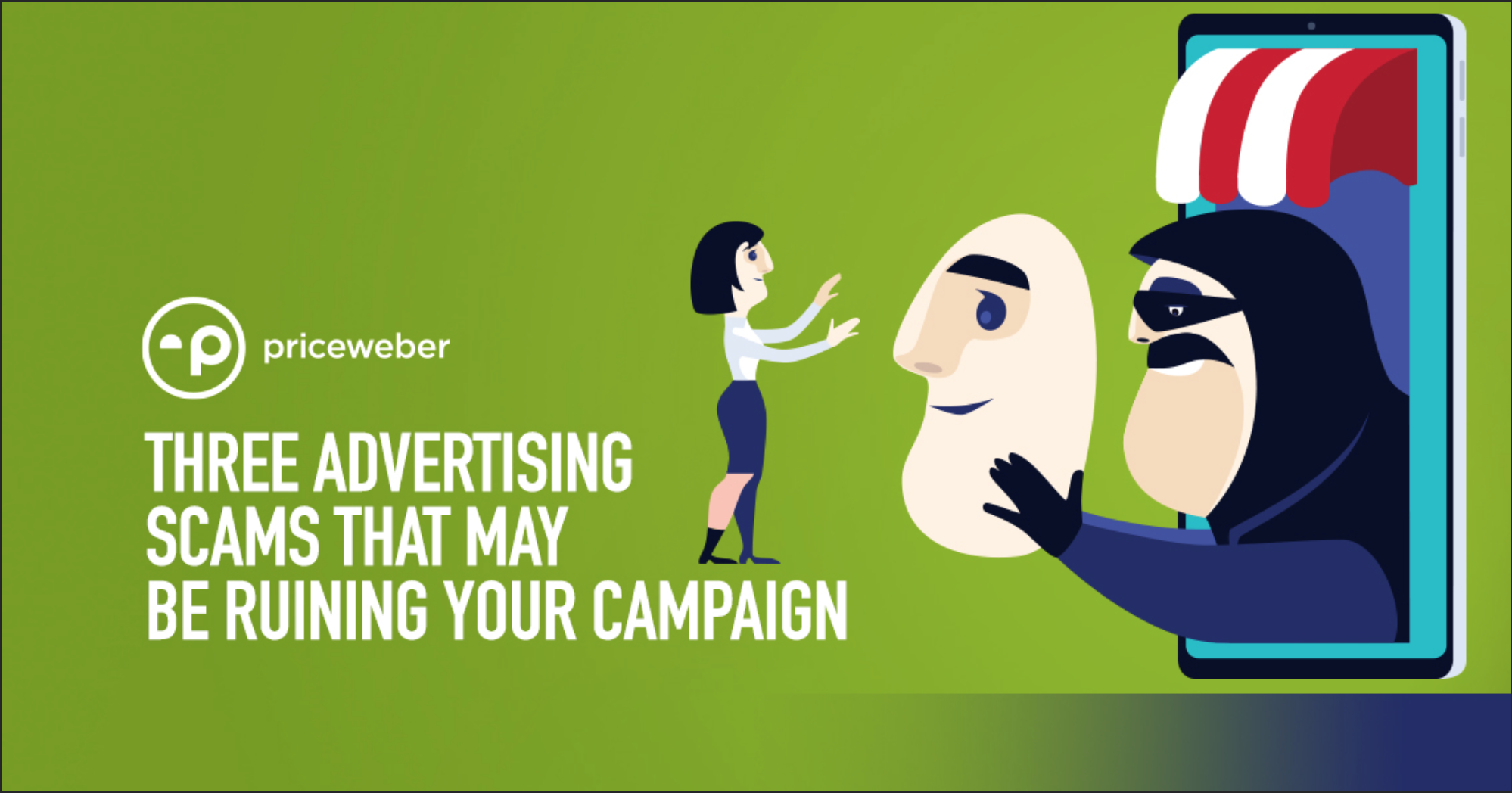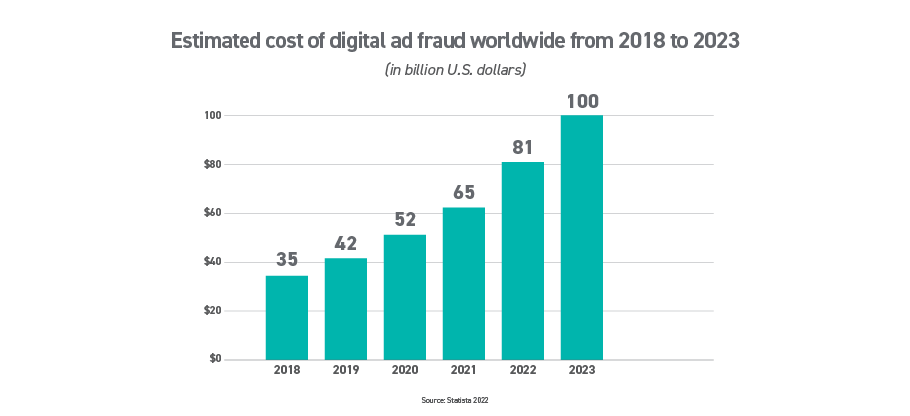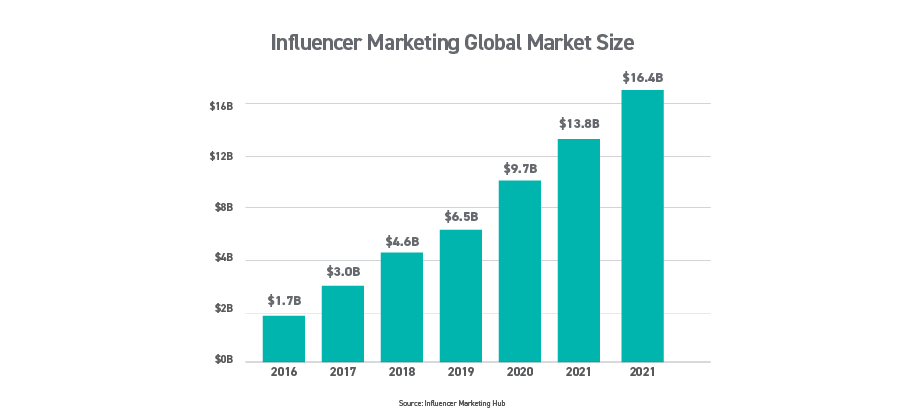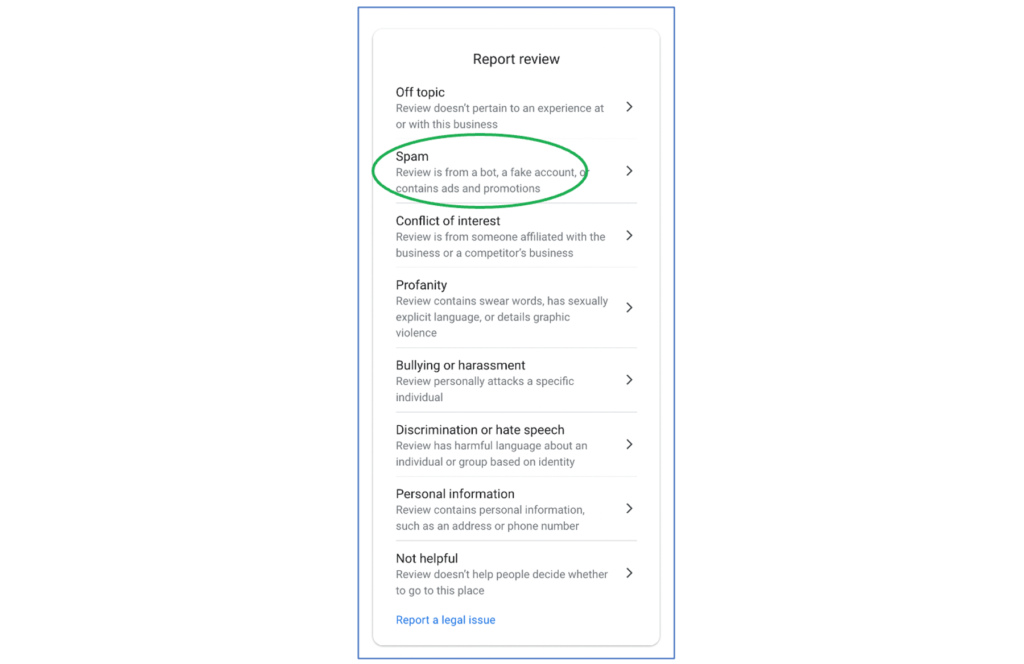Brands spend a ton of money getting the word out, driving engagement and generating sales, but fraudulent practices are costing advertisers billions every year. In this edition of Plain Talk, we’ll talk about three shady practices separating you from your hard-earned ad dollars and costing you sales. We’ll discuss:
-
What are click and form fraud, and what can you do to stop it?
-
What can you do to prevent fake social media profiles from ruining your social plan?
-
Black Hat and Gray Hat SEO. Why is all that SEO work not improving your SERP?
Is ad fraud a major problem?
In a word, yes. In 2022, the world is expected to spend somewhere around $738 billion on media, and roughly $404 billion of that ad spending (55%) is forecast to be in online advertising. Yet this same year, an astounding $81 billion is expected to be lost to digital ad fraud. That’s the equivalent of 11 percent of the total global ad spend or 20% of all global digital ad spending this year.
This kind of fraud disproportionately harms small and medium businesses and professional services businesses because they tend to rely more heavily on digital advertising and lead-generation tactics to grow their companies. So, are you ready to sacrifice 20% or more of your ad spend to shady practices? We didn’t think so. Here are a few of the most common ad fraud practices, what you can look for and what you can do about them.
What are click and form fraud, and what can you do to stop it?
Most advertisers have had a moment where they’ve looked at their digital ad spend and wondered what they were doing wrong. Why isn’t it working? It may not be you or your plan at all. It may be click fraud. So, what is click fraud?
Simply put, click fraud occurs when a human, automated script or computer program imitates a legitimate user of a web browser by repeatedly clicking on ads without having any actual interest in the product or service to which the ad links. This is done for a couple of reasons:
1) To increase the fraudster’s ad click revenue. This is generally site owners who use humans or bots to click ads running on their own inventory and pocket your money.
2) Gross to say, but a lot of low-volume click fraud may be coming from competitors. They do this, often early in the day, to deplete your daily ad budget and move from the number two spot to the number one spot for a keyword without having to outbid you. Also, of course, to make your ad spend useless by burning it as early in the day as possible.
3) Third but related is you may see click farms clicking multiple times along a path to conversion to artificially increase engagement rates.
This type of fraud can happen in a number of places, so you need to be careful where and from whom you buy and monitor performance closely. Many demand-side platforms (DSPs) are packed with essentially counterfeit inventory. You buy the inventory at what looks like great rates, and then revenue from these fake ads is diverted from your buy right into the fraudster’s pockets without you knowing and leaving you puzzled as to why your carefully planned ad buy isn’t performing well.
Three click fraud watchouts:
- Google will gut-punch me for reminding you of this, but it’s worth knowing that not all paid search inventory on Google is owned by Google. For example, if you buy ad inventory from Google’s Marketplace, Google is acting as an intermediary between you and outside publishers who are selling inventory that Google does not own or control. If, for example, your paid search campaign is generating a lot of clicks but a very high bounce rate, try “turning off” Google partner ads and see if the same continues to happen. If not, you’ve probably been cheated by click fraudsters.
- Another clue to look for is super high bounce rates from referral traffic. In your analytics, it’s pretty easy to determine what website traffic is coming from (for example) your pay-per-click (PPC) plan. Unless your ads are very misleading or your landing page experience is awful, this referral traffic should be pretty qualified to spend at least some time exploring your website. After all, they chose to go there based on your ad. So, if your bounce rate from this traffic is very high (like over 70%) and your conversion rate is lower than typical, you may need to halt your campaign and look at possible fraud issues.
- High-engagement/low-conversion contacts are another clue you are being had. If you are advertising in a lead-gen campaign, for example, you may find that you are getting a ton of form completions that look real, but when your sales team follows up, the leads evaporate, the phone numbers are wrong or fake, emails get kicked back, etc. If you see this happening with ad-referred traffic at a rate that is significantly higher than organic site traffic, you are probably experiencing human or sophisticated bot form fraud. This one can be really frustrating because of the additional follow-up cost compounded by your wasted ad budget.
Things you can do:
- Set up a “secure” buy – There are a few things you can do to reduce the risk of fraud, including:
- Don’t make cost your number one KPI. Many advertisers are lured by the promise of cheap cost-per-click ads on low-quality sites or from shady demand-side platform (DSP) partners. If a deal seems too good to be true, it is. It’s the internet, not a garage sale. Expect to pay a fair price to reach your target.
- Make sure you limit the countries that can click on your ads. Fraudsters who use VPNs to bypass this restriction will, but why allow people from Russia to click your ads if you don’t sell in Russia?
- Consider remarketing campaigns. Remarketing allows you to target ads to people who have already visited your website. This limits your buy to existing, probably human hand-raisers. This can dramatically lower the risk of fraud because you are only serving ads to people you already know based on past site behavior.
- Set conversions as “high-value” activities. Many spambots and all humans can complete a form today, even if you use a CAPTCHA. If your business allows, try to restrict conversion metrics that will affect your buy optimization to higher-value actions like actually buying something or placing a phone call.
- Get anti-fraud software – No fraud software is bulletproof, but it’s getting better and better every day at detecting bot, human and AI fraud. No matter what, some protection is way better than none, and it can be a big money and headache saver. Some affordable click fraud services include ClickCease, Adjust and Lunio, to name a few. These tools are not all the same, so it’s worth taking time to check out features and reviews to make sure the tool is right for how you plan and buy media.
What can you do to prevent fake social profiles from ruining your social plan?
Now that your PPC campaign is safe(er), let’s look at your paid social media spend. We all fell in love with the power of social media when we saw low-cost posts go viral, showering brands with free and awesome praise and fan love. While organic posts still go viral, the chance of yours being one of them is worse than your chance of winning the lottery. Much like search engines, social media platforms like money, so their algorithms are constantly evolving to help separate you from yours. That’s not likely to change. Unfortunately, there are considerably sneakier actors on social media causing your campaigns harm and money.
Political events over the past several years have shone a light on the problems that fake social profiles can cause socially, but they also can really mess up your social marketing plans. The level of sophistication of these fake accounts is also on the rise. For today’s discussion, we’ll focus on Meta platforms Facebook and Instagram, but these types of fraud issues can be found on virtually any social platform.
Types of fake accounts:
Between Facebook and Instagram, there are many types of fake (or invalid) account types. Let’s talk about the biggest troublemakers:
- Bot accounts – Bot accounts are a general term to refer to fake accounts that take actions (follow you, click ads, like engagement, etc.). These accounts are generally set up and run out of click farms that are not unlike those we mentioned above, and their purpose is to generate fraudulent ad revenue or to competitively blunt or derail your ad campaign. The latter can happen by generating no-value engagement that “optimizes” your campaign away from real, valuable audiences and into the abyss of fake or low-value profiles. Some of these accounts are pretty easy to spot, like a basic “follow-for-follow” bot account, while others are incredibly complex, with realistic activity and content.
- Fake influencer accounts – While these can be bot accounts, too, it makes sense to discuss fake influencer accounts separately because of the massive growth in social media influencer marketing. According to Influencer Marketing Hub, marketers will spend over $16 billion on influencer marketing in 2022. Brands line up to give buckets of money to Instagram stars with tens or even hundreds of millions of followers. We are not saying every Instagram star deliberately pays for fake follower accounts, but UK-based Fasthosts According to their estimates, big names like Kylie Jenner and Rihanna may have follower groups with as many as 40% and 36% fake profiles (respectively). Let that sink in. Fake influencer accounts drive up your sponsorship costs, while bots can misdirect your campaigns, abandon carts and give you a completely false idea of fan engagement.
Protecting your social spend from the fakes:
So, after absorbing that some of your favorite social influencers could have massive bot fanbases, what can you do?
1) Fraud software? Still a good idea. The battle between the good guys and the bots is being waged by developers. The same anti-fraud software options to protect you from PPC fraud are working to help identify and filter out bots on social platforms.
2) Use micro- and nano-influencers. There has been a lot of talk in the past few years about the growth in partnership with micro- and nano-influencers (basically influencers who have between 1,000 and 50,000 followers). This is usually because of higher engagement rates, but it’s worth considering smaller influencers – especially nano-influencers with 1,000 to 10,000 followers – to help limit fraud too. Large populations of easy-to-identify bot profiles would stand out much more easily in small influencer follower populations. These influencers are also generally more engaged, have fewer advertisers (less clutter) and have more genuinely engaged (real) follower communities.
3) The one fake profile we haven’t discussed is the one clients invite. Just last week, a client asked if we should “buy followers” (as opposed to paid like campaigns) for their new brand social pages because organic followers were growing slower than they had hoped. We know it’s tempting. We all remember the first Facebook pages to hit a million fans (mostly fake), but what you may not know is those brands ended up spending years plucking fake fan accounts out of their populations, and it is painful. Why remove them? Increasingly, social channels are limiting the exposure of organic traffic to fewer and fewer followers. If your account is loaded with fakes, the chance that your organic content will be popular or even get seen drops close to zero, and that really nice content you made amounts to nothing. So, avoid the temptation to pad your numbers.
Black Hat and Gray Hat SEO. Why is all that SEO work not improving your SERP?
This is a big topic, and we promise to do a separate Plain Talk to dig deeper, but Black Hat SEO is something you really need to understand to grasp the challenges and risks faced by your internal (or agency) marketing team. So, what is Black Hat SEO? On the surface, it looks like brands being naughty to artificially boost their SERP results, and there is some truth to that. Many brands take a calculated risk and violate search engine policies in the hopes of gaining organic visibility without getting caught by the Google police. Grey Hat SEO is the slightly less naughty version where practices are just outside of what’s acceptable by search engines. That all sounds pretty harmless, right? Maybe not.
Bad Black Hat SEO practices:
First, let’s look at Black Hat practices that a brand or a brand’s agency might do just to game the system. These are the little cheats and corner cuts that seem harmless but can get you clobbered by Google. Things like:
- Hidden text – Simply put, you would be keyword stuffing but hiding the text, so it’s not visible to the viewer to pop up earlier on search (think a white text on a white background). Google figured this one out a long time ago, folks. Don’t bother.
- Cloaking – This is when your team writes code to show different HTML to Google vs. users (it also does not work, so don’t waste your time).
- Content duplication – A fancy phrase for plagiarism that just means that you are stealing high-quality content from someplace else and dropping it on your site to help you index. Besides the fact that this is unethical, Google has gotten pretty good at detecting duplicate content and will ding you if you are caught. This is also true of a practice called “spinning,” where you try to hide your plagiarism by swapping in a few words here and there.
- Buying backlinks – If you are like us, you STILL get emails weekly from someone offering to sell you 1,000 “high-quality” links to your site for an attractive price. Like a lot of Black Hat cheats, this worked for a while, but Google’s AI has gotten really good at spotting link profiles that smell funny.
- Astroturfing – Another seemingly “victimless” cheat is the practice of astroturfing or writing (or paying someone to write) fake positive reviews for your company. People are not as good at this as they think, and Google and others have AI that has gotten pretty good at spotting and flagging your review activity. Deliberate fake reviews are always a violation of the terms of service for the review site. This means delisting or other punishments that can impact your search visibility and brand reputation are possible. Fake reviews also MAY be a violation of Federal law according to the Federal Trade Commission’s “Guides Concerning the Use of Endorsements and Testimonials in Advertising.” As noted in an article by Review Trackers, the FTC can be pretty litigious. In 2019 the FTC brought suit against an Amazon seller for astroturfing, and the resulting $12.8 million fine was chilling to cheaters, so avoid the temptation.
All these techniques have one thing in common: they don’t really work for very long, if at all. I mean, you’re trying to outfox Google. And if you are caught, you can actually be “de-indexed.” De-indexing is like Google’s version of excommunication. Your site becomes invisible to search (aka, it doesn’t “index”) and will stay that way until you fix your offenses and maybe longer if you’ve been particularly naughty. Even if you are not de-indexed, you will probably find that all that effort and money you put into trying to game the system just land you on page six of SERP results (so you may as well be invisible).
Doing unto others:
Another aspect of Black Hat that could cause your site some harm is what’s called “negative SEO.” This is when, rather than investing in doing their best White Hat SEO, an unscrupulous company will commit Black Hat violations to a competitor’s site. We’ve actually seen and remedied this for clients in real life, and it’s pretty shocking to see. Two of the bigger negative SEO practices include things like:
- Toxic links – According to Search Engine Land, a toxic link “…is generally considered to be a link that has the potential to harm your website’s ability to rank.” It is possible for a competitor to generate toxic or “spammy” links to your site that could potentially get Google’s attention and generate something called a “manual action,” which could, in theory, harm your SERP results. While Google has gotten pretty good at detecting these kinds of attacks and ignoring them, they are not perfect. One option is to “disavow” spammy links. SEMRush has a great article on how to do that.
- Fake reviews – We’ve talked before about the importance of online reputation management and the benefits a positive and robust pile of reviews can have on your SERP results, so it stands to reason that if a bunch of good reviews can help you, a bunch of bad reviews can cause harm. Another Black Hat scheme is a “negative review attack,” where a steady stream of negative reviews pile up on Google and other review platforms to harm your reputation and reduce the number of customers who visit because your negative review score scares them away. Much like astroturfing for yourself, fake review attacks can really hurt your brand by getting you in trouble with the review site or, conversely, by just publishing low-score reviews that will push you lower in SERP.
Overcoming fake reviews:
While disavowing spammy links is pretty straightforward, overcoming Black Hat fake review attacks can be tricky, so what can you do?
1) Report fakes – There is a process to report fake reviews on most review sites, but not in bulk, so it’s a good idea to monitor reviews regularly. Removing reviews is generally up to the platform, but you do have to ask. The good news is they are pretty good at knowing when you are right.
2) Get good reviews – While astroturfing can get you in trouble, you can actively manage and solicit positive reviews using review management software tools like Birdeye. These tools help make it easy for satisfied customers to pay you the compliments you so richly deserve. Of course, positive reviews offset negative reviews and make negative review attacks less likely.
3) Respond – Even with valid negative reviews, it’s always best practice to respond. Failing to respond to fake reviews, on principle, just makes you look guilty. Respond to fake reviews by noting to review readers that the comment posted is fake and does not represent the views of a real customer and note that the review has been reported to Google (or the review site admins) for removal. Most people will believe you, so it’s worth the effort.
Good news:
While every one of these fraud instances happens thousands of times a day, you CAN protect yourself by following these steps. If you need a hand setting up your defenses, monitoring your social or ad buys, or responding to threats, feel free to give us a call at (502) 499-4209 or drop us a note here, and we’ll be happy to help.





